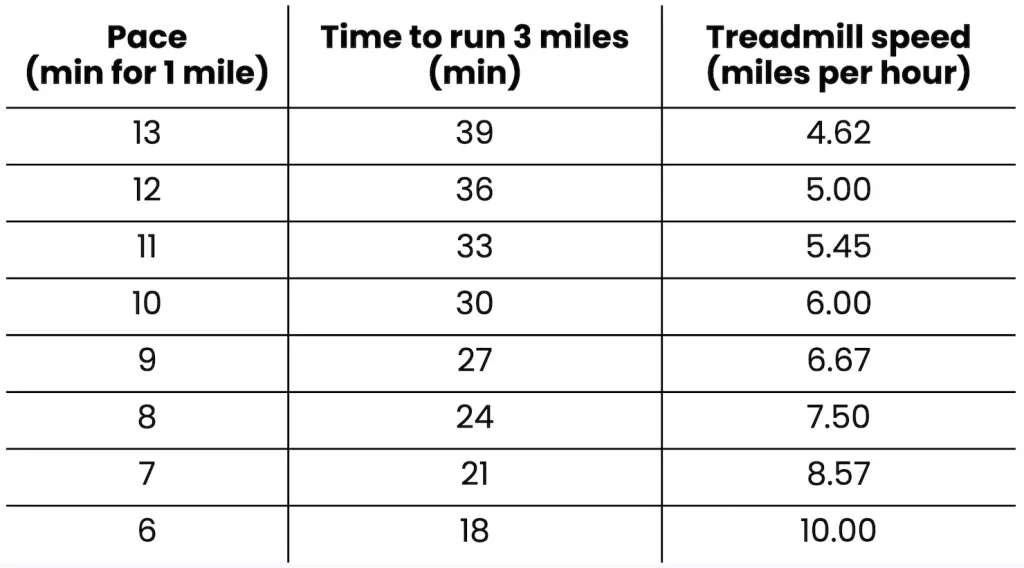This question is more complex than it might initially appear, with various factors influencing the answer. To understand the complexities of running five miles, we’ll explore how different factors affect speed for beginners and experienced runners alike, as well as discuss essential preparations and training strategies to maximize performance.
We will also provide insights on preparing for a five-mile run, emphasizing physical fitness levels and essential preparations before embarking on such a journey. We’ll look into the various tactics that can help you perform better when running long distances, including giving yourself some time to rest and recover.
Moreover, we will explore strength training’s benefits alongside endurance exercises and how muscle building enhances stamina. For those new to running daily or looking to start slow with their routine, we discuss common challenges faced by beginner runners and suggest alternative exercises that aid transition into regular jogging.
Focusing on holistic wellness needs for regular long-distance runs like diet requirements for runners and forming healthy habits through persistence are also included in our discussion. We further emphasize pacing oneself to avoid exhaustion burnout overexertion – exploring techniques around managing rest periods as part of a weekly schedule while avoiding monotony in one’s exercise program.
In conclusion, whether you’re an experienced runner aiming for a half marathon or just starting out with hopes of losing weight or improving fitness levels – understanding how long it takes to jog 5 miles can help set realistic goals and enjoy running more effectively.
Understanding the Average Time to Jog 5 Miles
The time it takes to jog five miles can vary greatly from person to person. Age, gender, physical aptitude and running experience all significantly influence one’s jogging velocity. Don’t be disheartened if it takes you longer than others to jog five miles – everyone has their own speed.

Factors Influencing Jogging Speed
- Age: As we get older, our bodies naturally slow down. This doesn’t mean that older individuals can’t enjoy jogging; they might just take a bit longer.
- Sex: Men typically run faster than women due to differences in muscle mass and body composition.
- Fitness Level: Your current physical condition plays a huge part in how fast you can jog five miles. The fitter you are, the quicker your time will likely be.
- Jogging Experience: If you’ve been regularly hitting the pavement for years, chances are high that you’ll complete those five miles much quicker than someone who’s lacing up their sneakers for the first time.
To put things into perspective: beginners may find themselves completing this distance within approximately 55 minutes, while seasoned runners could potentially finish under 39 minutes.
Differences In Running Times Between Beginners And Experienced Runners
A beginner runner is still learning about pacing and building endurance – both of which significantly impact running times. It’s common for novices to start off too quickly then tire before reaching their goal distance whereas experienced runners have honed these skills over time allowing them to maintain steady speeds throughout the entirety of the run resulting in faster completion times. Although individual needs vary, it is important to discover the best routine and style for you personally and maintain consistency in order to gradually improve performance. The key is finding a routine and style that suits you best and sticking with consistency to improve performance gradually over time.
The article discusses the average time it takes to jog five miles, which varies based on factors such as age, sex, fitness level and jogging experience. Beginners may take around 55 minutes while experienced runners could potentially finish under 39 minutes due to their honed skills in pacing and endurance building. It is important for individuals to find a routine that suits them best and stick with consistency over time to improve performance gradually.
Preparing for Your Five-Mile Run
If you’re considering taking up long-distance running, it’s essential to be well-prepared. Running five miles is a significant milestone and requires not only physical readiness but also mental determination. To ensure success, one must be adequately prepared for a five-mile run.
Essential Preparations Before Starting Your Run
The first step towards preparing for a five-mile run involves setting realistic goals. Patience is necessary when striving to reach your goals, and taking the time to gradually build up stamina will be beneficial. A good way to start could be by incorporating walk/run intervals into your routine until you build enough stamina to jog continuously.
Besides training, investing in appropriate gear like comfortable running shoes and breathable clothing can significantly enhance your experience. Remember, comfort should always take precedence over style when choosing workout attire.
Importance of Physical Fitness Prior To Long-Distance Runs
Maintaining an overall healthy lifestyle plays a crucial role in prepping for long runs. Regular exercise helps improve cardiovascular health which directly impacts endurance levels during strenuous activities such as jogging.Regular exercise benefits
- Aerobic activity: Activities like swimming or cycling help increase heart rate improving overall cardiorespiratory fitness.
- Muscle-strengthening exercises: These include weight lifting or resistance band workouts which boost muscle strength aiding better performance while running.
- Flexibility exercises: Stretching regularly improves flexibility reducing chances of injuries during runs.
In addition to regular exercising, adopting healthier eating habits aids greatly too.A balanced diet rich in proteins and complex carbohydrates provides necessary energy required during intense workouts.Furthermore,staying hydrated before,during,and after runs prevents dehydration,a common issue faced by runners.
To sum up,before embarking on any new fitness challenge,ita€™s vital that one prepares adequately both physically and mentally.Running 5 miles might seem daunting initially,but with consistent effort,persistence,and proper preparation,youa€™ll soon find yourself crossing that finish line.
This section provides tips and advice on how to prepare for a five-mile run, including setting realistic goals, investing in appropriate gear, maintaining physical fitness through regular exercise and healthy eating habits. The article emphasizes the importance of patience and persistence in achieving this milestone while also highlighting the benefits of cardiovascular health, muscle strength, flexibility, and hydration.
Training Strategies for Better Performance
If you’re serious about consistently jogging five miles, you need a solid training plan. Consistent performance requires dedicated training sessions three or four times a week with adequate recovery periods between runs.
Different workout strategies for long-distance running
Not all workouts are equal for long-distance running. Incorporating different types of workouts can improve results over time. Fartlek (speed play) training involves varying your pace throughout your run, which can help build endurance and speed. Interval runs, where you alternate between high-intensity and low-intensity intervals, are also effective.
- Fartlek Training: This Swedish term translates as ‘speed play’. It’s an unstructured form of training where you mix up your pace during the run at random intervals.
- Interval Runs: These structured sessions involve short bursts of intense effort followed by longer periods of easy-paced recovery.
The role of recovery periods in improving performance
A common mistake among new runners is neglecting the importance of rest days. Recovery days allow our bodies to heal from the stress placed on them during intense exercise sessions, leading to improved performance over time. Without sufficient rest, we risk injury and burnout – neither conducive to reaching our goal.
To make sure you’re giving yourself enough downtime between runs while maintaining consistency, try something like this: Run Monday, Wednesday, Friday. Take Tuesday, Thursday and the weekend to rest; then repeat. Repeat. Remember, everyone is unique, so what works for one person might not work for another. Feel free to experiment and find the best schedule that fits your lifestyle and goals.
Building Strength Alongside Endurance
Want to jog five miles regularly? It’s not just about endurance, but also strength. Incorporating strength training exercises into your routine can significantly enhance your performance and reduce the risk of injuries.
Benefits of Strength Training Alongside Endurance Exercises
Don’t worry, runners. Strength training won’t make you bulky and slow. In fact, a well-rounded fitness regimen should include both cardiovascular workouts (like running) and resistance or weight-bearing exercises.
- Muscle Power: Regular strength training helps build muscle power, enhancing speed during runs.
- Injury Prevention: It strengthens muscles and joints, making them more resilient against stress-related injuries from long-distance running.
- Better Balance & Stability: It improves balance and stability – crucial for maintaining good form while jogging over uneven terrain or during fatigue towards the end of a run.
How Muscle Building Enhances Endurance
Exploring the effects of muscle building on endurance requires looking into our body’s energy systems. When you’re jogging at a steady pace for an extended period (like when covering five miles), your body primarily uses its aerobic system – one that relies heavily on oxygen supply through blood flow to generate energy within muscles.
The stronger these muscles are, thanks to regular strength-training sessions, the better they become at utilizing this oxygen-rich blood efficiently. This means you can maintain a steady pace longer without tiring as quickly.
Incorporating strength-building exercises like squats, lunges or deadlifts, targeting major muscle groups involved in running can be beneficial here.
Remember though; always ensure proper form while performing these exercises to avoid any potential injury risks.
Challenges Faced by Newcomers When Running Daily
If you’re new to running, a daily five-mile jog can seem daunting. The physical demands and mental fortitude required for such an endeavor are not insignificant. But don’t let that deter you. Patience, commitment and readiness are key to surmounting the difficulties.
Common Challenges Faced by Beginner Runners
- Muscle Soreness: As your body adjusts to the increased activity level, muscle soreness is common. Proper stretching before and after each run can alleviate this discomfort.
- Breathing Difficulty: Learning to control your breathing while running is essential but often challenging for beginners. This guide on controlled breathing techniques might help.
- Mental Fatigue: Maintaining motivation when starting any new exercise routine can be tough – especially when it involves covering long distances every day.
The key here is consistency: stick with it even if progress seems slow at first. Remember why you started in the first place – whether it was for health reasons or simply as a personal challenge – and keep that goal in mind during tougher days.
Alternative Exercises That Aid Transition into Regular Running
To ease into regular running without overwhelming yourself physically or mentally, consider incorporating alternative exercises into your training regimen initially. These could include activities like cycling or swimming which offer similar cardiovascular benefits without being as hard on joints as running might be initially.
- Cycling: Helps build endurance while offering a low-impact workout option that complements jogging efforts well.
- Swimming: Provides full-body conditioning, making it another excellent cross-training choice for runners.
Incorporating different types of workouts will also prevent boredom from setting in too soon, keeping motivation levels high throughout the early stages of transitioning towards becoming a seasoned runner who jogs five miles daily with relative ease.
This section provides tips and advice for newcomers to running who may find a daily five-mile jog challenging. Common challenges faced by beginner runners include muscle soreness, breathing difficulty, and mental fatigue. To ease into regular running without overwhelming oneself physically or mentally, alternative exercises such as cycling or swimming can be incorporated into the training regimen initially. Consistency is key in overcoming these challenges and achieving one’s goals of becoming a seasoned runner who jogs five miles daily with relative ease.
Needs for Regular Long-Distance Running
Committing to running five miles regularly necessitates dedication, consistency, and proper nutrition for optimal performance. When you commit to running five miles regularly, your body needs the right fuel to perform optimally.
Balanced Diet Requirements for Runners
A balanced diet rich in lean proteins, fruits, and vegetables plays an essential role in supporting your long-distance running efforts. Proteins help repair muscle tissues damaged during runs while fruits and vegetables provide necessary vitamins and minerals for overall health. Carbohydrates should be consumed in appropriate amounts to provide the necessary energy for running. A healthy runner’s diet can guide you on how to balance these nutrients effectively.
- Lean Proteins: Foods like chicken breast, turkey, fish, or tofu should be included in every meal.
- Fruits & Vegetables: These offer a wide range of vitamins and antioxidants that boost immunity and aid recovery.
- Carbohydrates: Whole grains such as brown rice or quinoa provide sustained energy release, which is beneficial for long runs.
Persistence and Patience in Forming Healthy Habits
The journey towards becoming a regular long-distance runner isn’t always smooth sailing; it demands persistence since habits typically take at least thirty days to fully form. Therefore, patience is key here. Remember not to rush into things but instead gradually increase your distance over time until you reach your target of five miles per run.
It’s also important not only to focus on physical training but mental preparation too – reminding yourself why you started this journey can keep motivation levels high even when progress seems slow. The neuroscience behind habit formation suggests that positive reinforcement helps establish new routines faster.
Lastly, remember: Rome wasn’t built in a day. So don’t expect immediate results but rather enjoy each step (or stride) along the way.
The article discusses the importance of a balanced diet for long-distance runners, including lean proteins, fruits and vegetables, and carbohydrates. It also emphasizes the need for persistence and patience in forming healthy habits when it comes to regular long-distance running. Positive reinforcement is suggested as a way to establish new routines faster.
Preventing Exhaustion, Burnout, and Overexertion in Your Exercise Program
Beginning an exercise routine can be invigorating, but it’s essential to take measures to evade exhaustion, burnout and over-exertion. Before diving into a high-intensity workout, make sure you have a sufficient fitness level. This will help prevent injuries and make your exercise experience more enjoyable.
Pacing Yourself to Avoid Monotony and Injuries
Pacing yourself is key to avoiding exhaustion, burnout, and overexertion. Consistency and sustainability are more important than speed or distance covered. According to Runner’s World, finding your comfortable pace can help prevent injury and make your running experience more enjoyable.
- Maintain a consistent rhythm: This helps regulate breathing and prevents fatigue from setting in too early.
- Vary your training: Mix up long runs with short sprints or hill workouts to keep things interesting.
- Listen to your body: If something feels off during a run, slow down or take a break if needed.
Building a Foundation with Lower-Intensity Exercises
Starting with lower-intensity exercises like walking or swimming can help build a foundation for higher-intensity workouts. According to the Mayo Clinic, gradually increasing intensity as endurance builds up over time can help prevent injuries and burnout.
- Evaluate your current fitness level: This gives you an idea of where you stand physically so that you can set realistic goals for yourself.
- Create a gradual plan: Rather than jumping straight into high-intensity workouts, start with lower-intensity exercises and gradually increase intensity over time.
Incorporating these strategies will not only make the transition smoother but also enhance overall enjoyment of the journey towards becoming regular exercisers.
Seasoned vs Beginner Runners: A Lifestyle Comparison
Though five miles a day may seem like an ambitious goal for novice runners, it’s important to be mindful of your body and take breaks when needed; rest days are essential for any runner. It’s essential to pay attention to your body and take breaks, particularly if you’re vulnerable to injuries or more aged and heavier.
Rest Days: A Vital Part of Your Weekly Schedule
Rest days are essential for your body to recover from the physical stress of running long distances. Incorporating heart rate-boosting intervals and strength-training sessions during the week can add variety while enhancing endurance and speed.
Techniques to Make Running Easier and Less Tiring
If running consistently feels like hard work, don’t worry – there are plenty of techniques to make it easier and less tiring. Learning proper breathing techniques, improving your form, and trying out different types of shoes can all improve your experience significantly.
- Breathing Techniques: Learning how to control your breath while running can greatly reduce fatigue levels, making your run more enjoyable overall.
- Race Strategy: Understanding pacing strategy helps prevent burnout and maintain steady energy throughout the entire distance.
- Gear Check: Wearing the right gear, including shoes and clothing, makes a big difference in comfort and performance, especially when tackling longer routes.
Incorporating these strategies into your routine won’t just make running less exhausting – they’ll likely increase enjoyment too, which is ultimately what you should aim to achieve in any fitness endeavor.
For more information on the importance of rest days, check out this article from Runner’s World.
Remember, whether you’re a seasoned runner or just starting, taking care of your body and finding ways to make running more enjoyable is key to achieving your fitness goals.
Conclusion
This post examines the elements that affect jogging speed, as well as how time spent running differs for novices and more experienced athletes.
We’ve also discussed essential preparations before starting your run, different workout strategies beneficial for long-distance running, and the benefits of strength training alongside endurance exercises.
For those facing common challenges as beginner runners, we’ve provided alternative exercises that aid transition into regular running and tips for avoiding monotony and potential injuries through pacing.
Managing rest periods as part of a weekly schedule is also crucial, as is maintaining a balanced diet to support your running goals.
By learning techniques to make running easier and less tiring, and having sufficient fitness levels before starting a new exercise program, you can avoid exhaustion, burnout, and overexertion.







